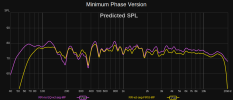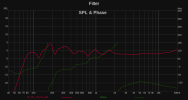- Joined
- Feb 27, 2018
- Messages
- 977
- Likes
- 1,078
What difference does it make? If that's in the room when you listen, then leave it there to measure... if you change your sofa then just remeasure
Because if I move the mic 3 inches, the minimum frequency of the dip is at a different frequency. I don't listen with my head in a vise--do you?


 )
)


